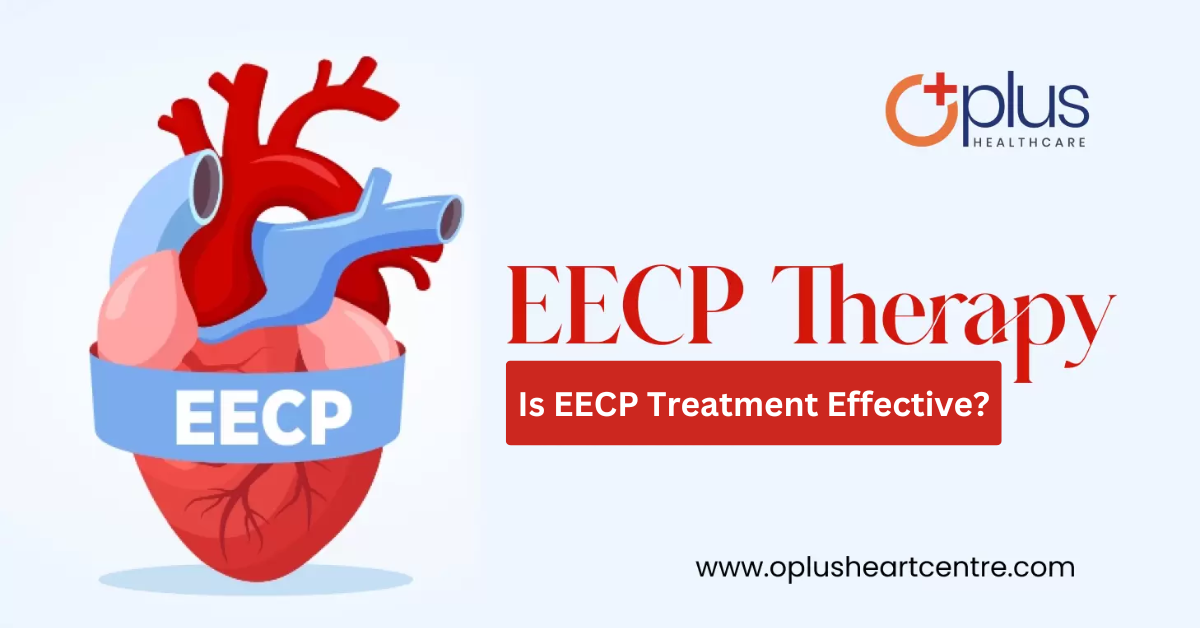- 11 March 2024
Is EECP Treatment Effective: In the realm of cardiovascular health, EECP (Enhanced External Counterpulsation) treatment has emerged as a promising therapy. But does it truly deliver on its promises? In this article, we delve into the effectiveness of EECP treatment, exploring its mechanisms, benefits, and real-world outcomes.
About EECP Treatment
EECP treatment, also known as external counterpulsation therapy, is a non-invasive procedure aimed at improving blood flow to the heart. It involves the use of inflatable cuffs wrapped around the patient’s legs, which are inflated and deflated in sync with the patient’s heartbeat.
How Does EECP Work?
During EECP treatment, the cuffs inflate sequentially from the calves to the thighs and buttocks, creating a ‘milking’ effect that enhances blood flow to the heart. This process increases coronary perfusion and reduces the heart’s workload, ultimately improving cardiac function.
The Science Behind EECP
EECP operates on the principle of counterpulsation, where the cuffs inflate during diastole (relaxation phase of the heart) and deflate just before systole (contraction phase). This synchronized pumping action enhances blood flow to the coronary arteries, promoting the formation of new blood vessels and improving oxygen delivery to the heart muscle.
Benefits of EECP Treatment
1. Enhanced Blood Circulation
EECP therapy stimulates the formation of collateral blood vessels, bypassing blocked arteries and improving blood flow to ischemic regions of the heart. This enhanced circulation can alleviate angina symptoms and promote overall cardiovascular health.
2. Angina Relief
For patients suffering from chronic stable angina that is unresponsive to medication or revascularization procedures, EECP treatment offers significant relief. By increasing coronary perfusion and reducing myocardial oxygen demand, EECP can reduce the frequency and severity of angina episodes.
3. Improved Exercise Tolerance
Many patients undergoing EECP therapy report improved exercise tolerance and stamina. By enhancing cardiac function and oxygen delivery, EECP enables individuals to engage in physical activities with reduced exertion and discomfort.
4. Non-Invasive Nature
Unlike invasive procedures such as angioplasty or bypass surgery, EECP treatment is non-invasive and devoid of significant side effects. It can be safely administered to patients who are not candidates for conventional revascularization procedures or those seeking an alternative to surgery.
5. Long-Term Benefits
Studies have demonstrated the long-term efficacy of EECP treatment in maintaining symptom relief and improving quality of life for patients with refractory angina. The sustained benefits of EECP underscore its role as a valuable adjunctive therapy in the management of coronary artery disease.
Also Read:
Is EECP Treatment Effective?
Despite its growing popularity, questions linger regarding the effectiveness of EECP treatment. While clinical studies and real-world experiences have highlighted its benefits, individual responses to EECP may vary. Factors such as the severity of coronary artery disease, comorbidities, and patient compliance can influence treatment outcomes.
View this post on Instagram
FAQs about Is EECP Treatment Effective
1. How long does an EECP treatment session last?
An EECP session typically lasts for one hour, and patients undergo a total of 35 sessions over the course of seven weeks.
2. Is EECP treatment covered by insurance?
While coverage may vary depending on the insurance provider and policy, EECP treatment is often covered for patients with documented coronary artery disease and refractory angina.
3. Are there any side effects of EECP treatment?
The side effects of EECP treatment are minimal and may include mild bruising or discomfort at the site of cuff placement. Serious complications are rare.
4. How soon can patients expect to experience benefits from EECP therapy?
Some patients may experience symptomatic relief after a few sessions, while others may require the completion of the full treatment course to derive maximum benefits.
5. Is EECP treatment suitable for all patients with coronary artery disease?
While EECP therapy can benefit many patients with coronary artery disease, its efficacy may vary depending on individual health factors. A thorough evaluation by a cardiologist is recommended to determine suitability for treatment.
6. Can EECP treatment prevent the need for invasive cardiac procedures?
EECP treatment can provide significant symptom relief and improve quality of life for patients with refractory angina. While it may delay the need for invasive procedures in some cases, its role in preventing such procedures requires further research.
Conclusion: Is EECP Treatment Effective
In conclusion, EECP treatment holds promise as an effective therapy for patients with refractory angina and coronary artery disease. By enhancing blood flow to the heart and alleviating angina symptoms, EECP can improve quality of life and functional capacity in individuals with chronic cardiac conditions. While individual responses may vary, the overall benefits of EECP therapy underscore its value as a non-invasive adjunctive treatment option.



